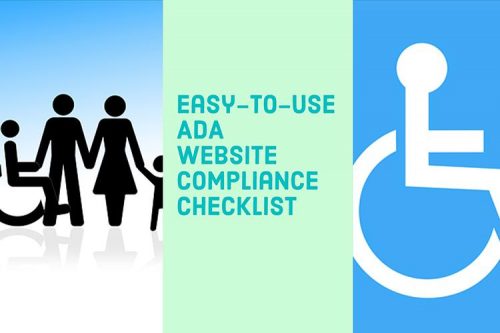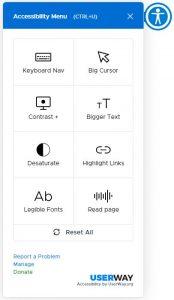As we move further into the digital age, there is growing concern among e-commerce business owners of the possibility of legal action being taken against them because their websites don’t comply with the Americans with Disabilities Act.

The Americans with Disabilities Act has been around long before e-commerce started playing a role in our daily lives. Title III of the ADA prohibits any discrimination on the basis of disability for businesses that are considered “public accommodations,” or in other words, businesses that are open to the public. ADA requirements are meant to help all individuals with disabilities to still be able to access public businesses just like everyone else.
Since e-commerce is now playing a major role in our lives, the Department of Justice is changing how the ADA applies to online websites and businesses. As the Department of Justice continues to redefine ADA web compliance, you should take the measures to meet ADA’s requirements to prevent the possibility of legal action.
Do Websites Have to Be ADA Compliant?
At this time, there are no clear guidelines or rules that business websites must adhere to in order to be ADA compliant.
The whole purpose of the Americans with Disabilities ACT of 1990 is to ensure that any person with a disability has the same opportunity as everyone else in terms of accessibility to public businesses.

As the Department of Justice updates the ADA Act, current business owners are pushing the initiative to make their websites ADA Compliant in order to avoid legal action being taken against them.
As of now, your website does not necessarily need to be ADA Compliant. But there are actual benefits from adhering to ADA Compliance Guidelines. Through ADA compliant website design, your business’ website could benefit your company in the long run. Below are some benefits you can receive if you choose to make your website ADA compliant:
- Increase Your Reputation: Having an ADA compliant website shows your audience how valuable they are to your business. It is one way of showing that your business is not limited but available to everyone.
- Increase Your Audience: Being ADA compliant allows anyone with a disability to still access your website. Not being ADA compliant can make your website miss out on millions of potential customers who have disabilities.
- Increase Website Usability: Being ADA compliant will increase your website’s overall usability. ADA Guidelines make the website easier to use not only for people with disabilities but everyone in general. It will help people navigate and find what they are looking for faster on your website.
- Increase SEO: Most ADA guidelines require alt tags within your HTML code. Alt tags and other factors that make your website ADA compliant are actually good SEO practices. This helps search engine, like Google, read your website.
- Avoid Potential Lawsuits: Lawyers have been taking action against businesses who don’t comply to ADA requirements. Even though it is a small possibility unless you are a world-wide recognized brand, it is worth becoming ADA compliant to avoid the possibility of lawsuits.
ADA Compliance Website Checker
Is My Website ADA Compliant?
Read through and check off all of the website ADA compliance guidelines to ensure that your website meets all ADA’s requirements for accessibility.
-
Each page has the option to “skip navigation” link to bypass screen readers from reading all navigation links.
-
All links have a text description that can be read by a screen reader.
-
All media have alt texts that describe what the image displayed on your website is conveying.
-
All documents (e.g., PDFs) posted on your website are available in HTML format.
-
All online forms have HTML tags that describe the controls for submission.
-
All online forms should describe the information requested. (e.g., “your gender” instead of “male or female”).
-
All video on the website have audio descriptions for what is being played on the website.
-
All videos have written captions of what is being spoken on the video being displayed on the website.
-
All audio files on the website have written captions of spoken communication.
-
All webpages have been designed so they can be viewed using visitors’ web browser and operating systems for color and font.
-
Do you have written policy on your website’s accessibility?
-
Is your policy on accessibility easily located on your website?
Executive Summary
If your business falls under either Title 1 or Title 3 of the ADA, it is best practice to begin planning an initiative to meet ADA requirements for your website. Although there are no laws, guidelines or rules set at the moment for e-commerce, this can protect you from the possibility of legal action and as well improve your business’s website altogether.



